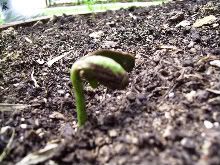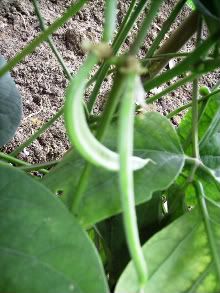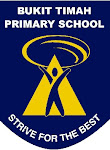How To Soar in PSLE - BTPS Way!!
Interact with complex questions / graphs / pictures to pick up valuable clues (don't highlight - just use your pen to underline words or scribble notes)
Start with Booklet A and do it meticulously with full focus - explore all 4 distractors before making final choice.
MANAGE your TIME - to score well, you need to try to finish ALL questions.
Specific answers = answers that are relevant to question.
When confused, choose any of the following strategies:
1. Ask, "What Science idea is being used in question?"
2. Pose other questions to clarify your thoughts
3. COMPARE to another set-up
4. COMPARE to a reverse situation
5. Connect to your knowledge in life (yes, you do have lots of prior / other knowledge)
6. Break down your answer in steps before crafting final answer.
Common problems with wrong answers:
*Answers are generic/vague and do not connect to that specific question
*Answers are not scientific and do not explain using Science ideas
*Answers do not make use of data provided when asked
*Answers did not make comparisons - use words like more/most etc..when asked
BTPS supports all P6 in achieving their PSLE GOALS!!
Chapter 8, pg 75

"... he kicked out and threw the hatchet at the sound, a noise coming from his throat. But the hatchet missed, sailed into the wall where it hit the rocks with a shower of sparks..."
Q4) Explain clearly how the sparks were created?
Science Around Me (SAM)
SAM is a Science journal that allows pupils to express themselves in their favourite ways about Science.
SAM is another great opportunity for pupils to THINK and TALK Science in a medium that is customised to their learning styles.
SAM allows teachers to informally assess understanding of the child and clarify misconceptions in their learning.
When Ice Changes into Water by Goh Chee Yan - 5G
Do you wonder whether the mass of ice changes when it melts into water. Try this out:
1. Put a few ice cubes into a plastic bag
2. Tie the mouth of the bag tightly
3. Weigh the bag of ice cubes (if there is condensation outside the bag, wipe it dry before weighing)
4. Place the bag in the sun
5. When ice has melted, wipe the outside of the bag dry (refer to step 3)
6. Weigh the bag
You will discover that the mass of the bag remains the same!
There is no change in mass when ice melts!!









37 comments:
Q4)
When the hatchet hit the stone , friction is produced . Friction will then be converted/changed into heat energy . This heat energy when comes into contact with the stone(dry item) ,converts to heat & light energy which is seen as sparks .
(the above is just my personal opinion )
Gu Yuling 6C
Youn Yea Won Ellia (6C)
We all know that friction produces heat.
When the hatchet hit the stone, the sound and friction was produced. This sudden friction of the stone and the hatchet caused a sudden spark. This spark cannot last long enough so it was gone soon.
Energy conversion:
Heat energy + sound energy (friction for HE and the hit for SE)→Heat energy + Light energy(sparks)
Just my opinion!
This subject got to do with Entropy. Since the great amount of kinetic energy is simultaniously converted into heat energy, vibration of paricles create photon with the this fomula. It requires us to explain with quantum electrodynamics and that means we got to violate Conservation of Energy. Which is then relate too confusing for everyone (Including myself)to understand.
Hope you get my point.
But, you can use Yea Won explaination,"When the hatchet hit the stone, the sound and friction was produced. This sudden friction of the stone and the hatchet caused a sudden spark. This spark cannot last long enough so it was gone soon." It is already good enough for simplexity reasons.
Then,(If you understand everything above) relate it to Energy and Friction and you roughly get the idea of what is going on.
the stone is a dry item.when the hatchet hit the stone,there is friction between the hatchet and the stone.when there is friction,there will be heat as friction creates heat.we cannot see heat energy.we can only see the effect caused by heat and light energy which is seen as sparks.
tan siqi(6G)
As we all know, there is friction between things. And friction produces heat and causes wear and tear. Therefore, there is friction between the hatchet and the rocks. However, we cannot see the friction and heat, we can only see the effect. And here, the effect of friction is the sparks.
Wu Xinyi 6G
When the hatchet hit the rocks,there is friction.The friction will then be converted into heat energy.Then energy conversion will take place,which changes heat energy to light energy which is also seen as sparks.
Tina Low 6Faith
Q4)When the hatchet hits the rocks,friction is produced when two objects come in contact.
From what i THINK, the hatchet is probably moving at a fast speed causing Brian to see sparks.(Same as rubbing two objects together and a flame may be produced.)
JJ (6C).
When the hatchet is thrown, friction was produced and converted into heat and sound energy (maybe).
Sparks are then created due to the light energy which as converted from the heat energy. As such, combined with the intense speed that Brian threw the hatchet, it might have created some sparks.
The sparks might also be the effect of the frictional force and the heat energy.
Sometimes, when playing with things that might have metal (like Beyblade), sparks are created when both collided into each other.
Si Jia
6 Grace
when the hatchet hit the wall it creates friction which generates heat. When struck against steel, a flint edge will produce sparks. The hard flint edge shaves off a particle of the steel that, heated by the friction, burns with oxygen from the atmosphere and can ignite the proper tinder
ruyan(6G)
When the hatchet hit the rocks, there is friction between the hatchet and the rocks. Heat is produced when there is friction. Such a hard throw from Brian could mean that more Chemical Potential Energy could be converted to more Heat energy. That such amount of heat energy can produce a few sparks consisting of heat energy (and light). The light may have come from the high temperature of the spark.
personal note: the last sentence might not be entirely correct.Elmer :) (6F)
When the hatchet was thrown,friction was produce between the hatchet and the wall and the friction that was produced was converted into heat and light energy,thats why sparks was produced.
Rachel Ngo S.H[6G]
Since the hatchet is a hard object, when it comes into contact with the wall, friction opposes the motion and produces heat and light energy, and in there maybe there is low humidity to produce sparks. Usually campers use this method to produce fire.
->Anthony Ghobind,6F
Questions to ask: What is a hatchet?
HAtchet is something like an axe.
First thing first, he threw the hatchet. A large amount of force was used,(Kinetic energy)Kinetic energy is being affected by its speed and mass. I suppose he was throwing at a very fast speed and the mass of a hatchet is quite heavy too.
2nd, it sailed in the air. Height and Mass. The mass of hatchet is quite heavy.(GravitATtional Potential energy).
3rd It hit the stones or rocks.When two objects come in contact together, what is it called?
Friction!!
The hatchet hit the stone, friction was produced. It should have some sound and heat was produced as friction produces heat. Sparks come from heat when the amount of heat is very high. So I can say it was the heat that caused the sparks.
Energy Conversion:KINETIC ENERGY - GRAVITATIONAL POTENTIAL ENERGY - KINETIC ENERGY = SOUND AND HEAT ENERGY(FRICTION).
Must support my answer. Have you ever tried lighting up matchsticks or rub 2 stones together? Sometimes they will produce heat thus causing fire. I suppose you have seen people lighting up matchsticks for birthday parties. If you had not, try doing these. Rub your two hands together now. You will see that your hands will become very hot. Hot means high amount of heat. And heat causes the sparks just now. All these had to do with friction. Friction between matchstick and box? Between 2 stones? and of course,your two hands.
MARCUS
The rocks were not wet and when Brian kicked the hatchet, there was friction between the hatchet and the rock and thus(the friction between the hatchet and the rock) creating the sparks.
Example: In car races, there will usually be smoke when the cars start. That is the same concept. There was friction between the tires of the cars and the floor.
Nicole,6Grace
When brian threw the hatchet and it hit the stone friction was produced and as friction was produced there were also be heat so the sparks came from the heat produced by the htachet when it hit the stone jia de 6G
Q4. the kinetic energy from Brian sending the hatchet flying and hit the rocks will be converted to sound (1), heat(2) and light energy as the rocks is solid(1) and when something get intact with something else, friction is produces between them.Friction will be converted to heat (of the rocks) and light (of the sparks) (2).
~Syafiqah 6Grace
when the hatchet hits the stone it touches the stone and created friction between the rock and the hatchet which then form sparks
Sally 6g
4)
The conversion that happened was:
Chemical potential energy to kinetic energy+ heat energy to light energy+ heat energy+ sound energy.
The hatchet flew(maybe Brian threw it with all his might and it flew very fast)and hit the rock.The hatchet rubs against the rock and so friction causes heat and light energy so there were sparks.
(It's all my own opinion,haha.)
~Rachel Neo,6 Faith~
Friction is produced when the hatchet hit the stone.Friction will then be converted into heat and light energy.
enyi(6f)
Friction is produced when the hachet hit the stone.The friction will produce heat energy.When heat energy interacts with the stone(dry item) it convert to heat and light which is seen as spark.
juan pang
When the hatchet hit the stone, there will be friction between the stone and the hatchet, so heat is produce and is convert to sound and light energy.
LiWeiWei,6grace
When the hatchet hit the stone, friction is produced. It will then converted into heat energy and sound energy. But, we cannot see friction and heat, but we can see the effect. The effect that cause the friction is the spark.
( My opinion )
sylvia 6 Joy.
Q4)
friction rubs the stone, therefore creating heat and it produce to sparks (a.k.a Light)
Bronson Chua 6Joy Peace..
Friction produce heat. When the hatchet hit the stone, which is a dry item, friction and sound energy is produced. The sound+heat energy will then be converted into heat+light energy which is also seen as sparks.
Liu Chia Chih 6F
when the hatchet hits the stone, there will be friction in between the stone and the hatchet therefore it creates some heat and sparks is produced but in order to make the spark live longer we can actually rub the hatchet on the stone.
shanice yeo 6Grace
By Dae Koon
Q1 : How can the friction create fire?
Q2 : Which two material rubbed together can create the fire most effectively?
Q3 : What are the methods that can create fire without using lighter, candle and any electric appliances?
Q4: How does each method works?
Q5: Which is the most effective and efficient method? Why?
Q1)
When two surfaces are rubbed together,there is friction.
We all know that friction produces heat,so when there is too much heat,a fire starts.
Q2)
I am not sure which two material rubbed together can create the fire most effectively.
Q3+Q4)
Many peoples use the friction of drilling or sawing sticks to create fire. One wooden stick (the drill, plough or saw) is twisted or rubbed against another (the hearth). This motion generates heat and kindles dry materials (tinder) placed where the two objects touch.
JJ (6C).
Q1 : How can the friction create fire?
When two objects are rubbed together, they generate friction. Friction generates heat and too much heat results in fire.
Q2 : Which two material rubbed together can create the fire most effectively?
I think it is dry branches and wide enough barks because in the adventure book I read, the man rubbed the dry branches onto the bark until it generated fire. That took the shortest time.(노빈손 어드벤쳐)
Q3 : What are the methods that can create fire without using lighter, candle and any electric appliances?+Q4: How does each method works?
1. One of the ways is to rub objects together, as I mentioned above, with branches and barks. Another way is to pour oil, which can catch fire very easily, onto a stone and throw another stone onto it. If you do not pour oil, it is harder for the stones to catch fire and takes much longer time to catch fire. This is because they can only produce short sparks. Another very easy way which does not require you to exert much effort is by using lens or transparent plastic bag. By putting it over a flammable object can generate fire after smoke is seen. This can work because the transparent plastic bag or lens can concentrate light energy of the Sun or any strong light source. The concentrated light energy is hot and after a few moments, fire is generated because of this heat.
Q5: Which is the most effective and efficient method? Why?
Among the methods mentioned above, the method using lens or a plastic bag(must be transparent to allow heat to pass through)is the most effective and efficient one because this method does not require you to use much energy because the only thing you need to do is to hold up a lens or plastic bag. This can also catch fire very easily and in a short period of time.
Youn Yea Won Ellia (6C)
the spark was created when the sharp edge of the axe hit against the bark of the tree ,so friction was formed and there were sparks as we cant see the friction and heat but only the effects
tobias lee 6hope
when the hatchet hit the rocks , there is friction produced which produces heat and then will be seen as sparks.
rae ann
The surface of the stone is rough therefore the friction between the blade of the hachet is so great that the heat energy is converted to light energy.
Lim zhi xiang
6Grace
Cha Da Eun (6c)
Rub your hands together and your hands will feel hot.Like what everyone said , there wase a friction between the hatchet and the stone which converted into heat energy.As the hatchet hit the stone very suddenly and srtongly, sparks were formed. Just like what cavemen did to make a fire.
When the Hatchet is thrown and hits the rocks, The kinetic energy is converted to sound energy and heat energy, that is why the hatchet seems like it is creating a sound. the sparks are produced as when the hatchet his the rocks, it creates friction and heat,thus the heat ignites the small paricles on the rocks, creating a small spark as there is not enough chemical potential energy to make the fire continue burning.
-Benjamin wong jing zhi(6G)
I agree with the rest that sparks are the ending effect of friction. However, if the stone was not dry, sparks would not be created as water acts as a lubricant.
As you know, energy cannot be destroyed. It instead converts into other forms of energy. In this case, it converts to heat and light energy, the sparks.
Joy Peh | 6c
Q4)Sparks lead to fire, right? As such, there is a possibility that the stone may not be an ordinary stone but flint.
What is flint? You may be asking that right now. Flint is a type of mineral used by olden people for making tools and starting fire. When struck against steel, a flint edge will produce sparks. The hard flint edge shaves off a particle of the steel that, heated by the friction, burns with oxygen from the atmosphere and can ignite the proper tinder.
Question number 2:What is timber? Timber is a material witch is combustible, meaning it can be used to start a fire.
To have all of the above to be true, the hatchet and the flint must be dry.
~Nicholas King(6C)
When the hatchet hit the stone , friction is produced . Friction will then be converted/changed into heat energy his sudden friction of the stone and the hatchet caused a sudden spark. This spark cannot last long enough so it was gone soon.
li zihan
Post a Comment